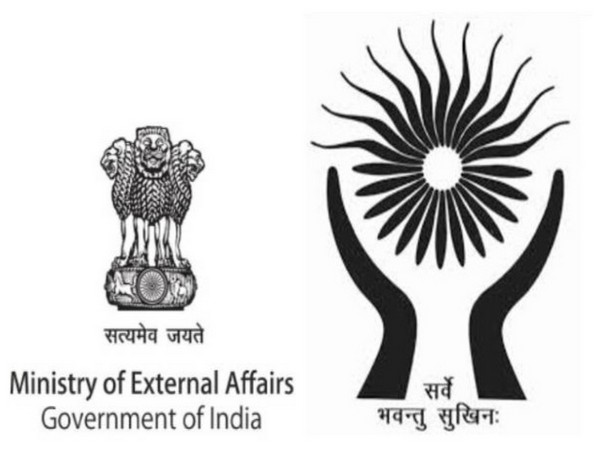New Delhi [India], September 24 (ANI): Banks in India are poised for a significant surge in bond issuances in FY2025, with estimates reaching Rs 1.2-1.3 trillion, surpassing the previous peak of Rs 1.1 trillion in FY2023, according to a recent report by ICRA.
The report highlights that this surge is being driven primarily by public sector banks (PSBs), which are expected to command an 82-85 per cent share of the total bond issuances, particularly through infrastructure bonds.
The increase in bond issuances comes as banks look to alternative funding sources amid deposit growth lagging behind credit expansion.
Tight liquidity conditions and strong credit growth, outpacing deposit accumulation, have prompted banks to turn to bond markets to meet their funding requirements. As of FY2025 year-to-date (YTD), banks have issued Rs. 767 billion in bonds, reflecting a 225 per cent year-on-year increase and already accounting for 75 per cent of the total bond issuances in FY2024.
The dominance of PSBs in bond issuance is largely attributed to their substantial infrastructure loan portfolios and the ongoing push from the Government of India for infrastructure development.
Sachin Sachdeva, Vice President & Sector Head – Financial Sector Ratings at ICRA, said, “During FY2015 to FY2022 public sector banks (PSBs) had a negligible share in infrastructure bond issuances. However, with an improved capital position, tight funding position, and a sizeable infrastructure loan book, the PSBs became dominant in the issuance of infrastructure bonds and accounted for 77 per cent of banks’ infrastructure bond issuances in FY2023-FY2025 (YTD). The trend is expected to continue through FY2025 with the PSBs likely to account for 82-85 per cent of the bank bond issuances in FY2025 and infrastructure bonds are expected to account for more than 2/3rd share.”
The availability of long-term funding for infrastructure projects, supported by strong demand from insurance companies and provident funds, has also played a crucial role in driving these bond issuances.
These infrastructure bonds, typically issued for tenors of seven years or longer, are structured to meet the demand for long-term investments from institutional investors.
Traditionally, banks’ bond issuances were dominated by Tier 1 and Tier 2 capital instruments aimed at improving capitalisation amid profitability and asset quality challenges.
However, since FY2023, infrastructure bonds have gained traction as profitability improved, reducing the need for capital-raising through these traditional routes.
PSBs, in particular, have benefitted from a stable depositor base, which allows them to focus on long-term funding for infrastructure projects. The banking sector’s total advances to the infrastructure sector are estimated at Rs. 13-14 trillion as of June 2024, with PSBs accounting for approximately 75 per cent of this figure.
ICRA’s analysis of 13 large banks revealed that the outstanding infrastructure bonds amount to Rs. 2.2 trillion as of August 2024, against an infrastructure loan book of Rs. 11 trillion as of June 2024.
Sachdeva said, “ICRA analysed a sample of 13 large banks (PSBs and PVBs), with infrastructure bonds outstanding at ~Rs. 2.2 trillion as on August 31, 2024, against which they have an infrastructure loan book of ~Rs. 11 trillion as on June 30, 2024. Of these 13, 11 have their infrastructure bonds outstanding as a proportion of their infrastructure book at less than 40 per cent, leaving a sizeable headroom for them to raise funds through these instruments.
In addition, affordable housing assets are also eligible for funding through infrastructure bonds and hence the overall eligible book is likely to be higher,” he added.
The funds raised through infrastructure bonds are not subject to statutory liquidity ratio (SLR) and cash reserve ratio (CRR) requirements, making them a more efficient source of capital.
However, these funds come at a slightly higher cost compared to deposits, which could be a consideration for banks.
Private sector banks (PVBs), on the other hand, are expected to limit their bond issuances as they focus on managing their credit-to-deposit (CD) ratios. High CD ratios could worsen optically if PVBs continue to raise funds through bonds.
In contrast, PSBs, with their ample headroom for bond issuances and strong infrastructure portfolios, are expected to continue raising funds through infrastructure bonds to support the sector’s growth.
As the infrastructure sector remains a priority for the government and financial institutions, the trend of rising bond issuances by banks, particularly PSBs, is likely to continue.
With Rs. 767 billion already raised in FY2025 YTD, banks are on track to surpass previous records and support the long-term funding needs of India’s infrastructure development efforts. (ANI)
Disclaimer: This story is auto-generated from a syndicated feed of ANI; only the image & headline may have been reworked by News Services Division of World News Network Inc Ltd and Palghar News and Pune News and World News
HINDI, MARATHI, GUJARATI, TAMIL, TELUGU, BENGALI, KANNADA, ORIYA, PUNJABI, URDU, MALAYALAM
For more details and packages

















